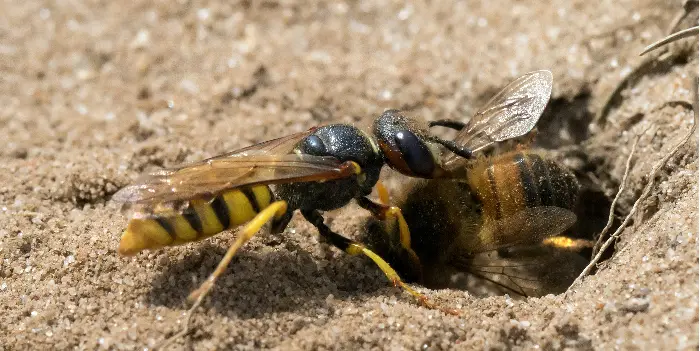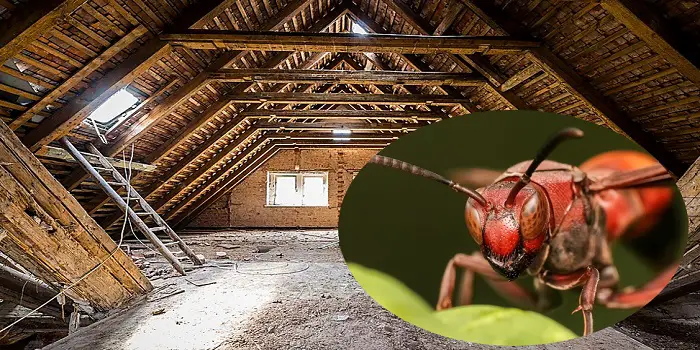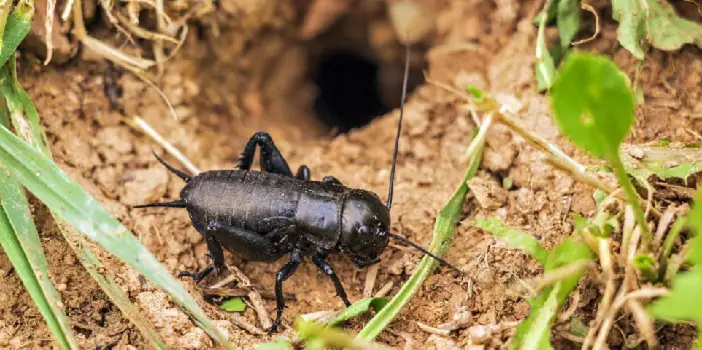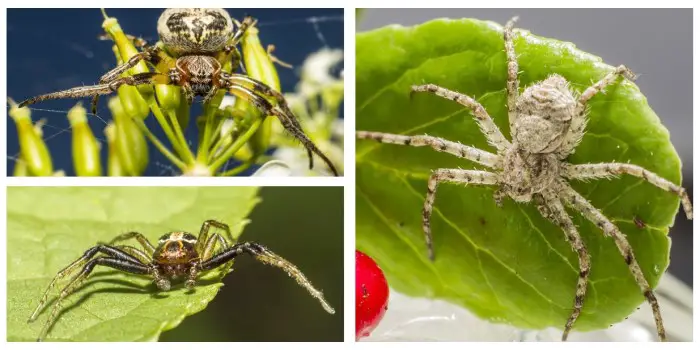
Despite their reputation, most spiders are harmless creatures that provide great benefits to nature and people.
And while they have a scary appearance to many, understanding their role is essential to keep them around your property.
There are over 38,000 species of spiders on the planet.
And yet only four present a danger to humans.
They include the black widow, hobo, yellow sac, and brown recluse.
The rest of the spiders do not present a danger and provide a valuable service in consuming insects.
Because spiders stay in one place, they can become ravenous when spring arrives and consume all sorts of insects which mostly include those that are pests to humans.
While most spiders tend to live in trees and spin their webs to catch insects, there are over 200 species that live on the ground.
Their presence not only reduces the insect population but also aerates the soil, improves the passage of water, and pulls away unwanted residues that make the topsoil better suited for planting.
Five species of garden spiders you will want on your farm follow.
They provide several benefits while not presenting a danger to you, your family, livestock, and pets.
1- Hunting Spiders
These are larger spiders that include the crab, green lynx, and wolf versions which can be quite frightening for many to see.
They are called hunting spiders because they do not weave webs to catch prey; rather, they hunt for them in the grass, gardens, and other outdoor locations.
Wolf spiders will pick a place to ambush their prey, most notably bugs and slugs.
While crab spiders will lie in wait, usually inside flowers.
But for the most part, hunting spiders will be out at night searching for prey.
Some species of hunting spiders have the capacity to jump as well.
This means they will hunt flying insects during the daytime when they can see them better.
2- Jumping Spiders
Perhaps the most frightening of the non-poisonous spiders, the jumping spider gets its name from its tendency to jump when near something threatening, such as humans.
There are over 4,000 species of jumping spiders; they have eight eyes and will normally react by jumping when they get too close to something they feel is threatening.
And while jumping spiders are not poisonous, they will bite if they feel threatened.
For the most part, the bite will cause a red patch to appear on your skin, but a little more.
3- Orb Weavers
Orb-weaver spiders are members of the spider family Araneidae.
These are some of the most beneficial spiders for reducing the flying insect population.
Although orb weavers can be distinguished by their relatively large size of up to one inch for females, they are best known for the magnificent webs that they weave, hence the name.
These webs are usually spiral wheel-shaped and are often found in gardens, fields, and forests.
Orb spiders come in different colors along with sizes, with the females being significantly larger than the males.
4- Sac Spiders
Sac spiders do not build webs and instead hunt for their prey in the garden and crops of the field.
They are often found on grapes as they make a good hunting ground.
Sac spiders will consume leafhoppers, caterpillars, and many different pests simply by bumping into them as they hunt.
Small in size, sac spiders are often mistaken for the brown recluse, but they lack the aggression of that more dangerous spider.
Still, they can bite if they feel threatened and will leave a red patch on the skin that may blister over time.
While the bite itself is not dangerous, it is possible for the bite to become infected, so it needs to be treated right away.
5- Web Spinners
These are the most common spiders as they spin webs in tree branches to catch their prey.
Webspinners are not picky about what they eat, which may range from wasps to butterflies.
Once their prey has caught itself in the web, the spider will dash out and bite them, which will kill its victim, and then wrap it in silk to protect the remains.
Only afterward will the spider consume its prey.
Webspinners have been the source of inspiration for many, including Robert the Bruce, in which the legend says his observance of a spider determined to finish its web helped him understand how patience and persistence would win independence for his kingdom of Scotland.
Of course, there is also the tale of a barn spider known as Charlotte, whose web saved the life of her friend Wilbur is one of the most popular children’s books.
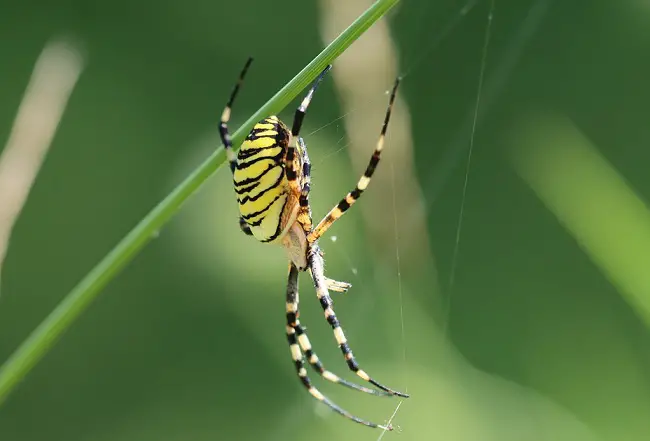
Why are Spiders Good for Plants?
The main benefit of spiders is their hunger for pests that eat the plants and flowers in your garden.
Flies, mosquitoes, wasps, aphids, beetles, and the like will consume what you have planted or present a threat to you and your pets.
Friendly garden spiders will keep the population of such pests in check.
You can think of them as your natural pest control as many garden spiders will eat at least one insect per day and often more.
Strong Webs
The webs built by garden spiders are solid as they use them to capture their food.
Although they have poor eyesight, they are known to be extremely sensitive to vibrations that may happen along the strands of their webs.
They position themselves at the center of their web and hang upside down.
As soon as they notice the prey, they will jump on it and paralyze it with injected venom.
Reduced pathogens
One other advantage of having friendly spiders in your garden is they also help in reducing bacteria and pathogens that can thrive on your plants.
Especially the plants that already have a pest problem are vulnerable and at risk for pathogens.
But spiders don’t care what they trap and eat. They can kill and eat whatever comes their way, including bacteria and pathogens.
Will they work in winter?
Remember, most garden spiders will become dormant during the cold months of winter but will awaken in the early spring around the same time as most insects.
They will start eating quickly and help prevent certain pests from becoming too numerous during the early days of spring.
Not only will they keep the insect population down, but they will also reduce the chances of diseases being spread to your plants.
And all that can be done without using any chemicals or pesticides, which can be the greatest benefit for organic gardeners who are growing vegetables and food for their families.
How to Bring Beneficial Spiders to Your Garden?
Chances are, you have at least a few garden spiders present.
The problem with trying to attract a spider is that they do not operate in that manner.
Spiders tend to wander about until they find what they want without any specific direction.
They will find their way there if your garden is a hive of pests.
But if your garden is devoid of prey, they will keep on moving.
In a sense, this is a good thing because it means your garden has few pests to harm the plants.
Sac spiders need places to hide, while orb weavers need some type of structure to hold together the webs that it creates.
But there are a few things you can do to maximize the chances of spiders finding their way to your garden.
- Plants: Include a few plants that will attract unwanted pests
- Mulch: This creates more humidity in the soil, which spiders enjoy
- Residue: Crop residue should be left in the grass during the winter to attract spiders
- Avoid Pesticides: What kills the pests will also drive away the spiders
It may seem counterintuitive to have plants that attract pests, but they will bring in the spiders to consume them.
While doing so,, make sure you put the plants on one side of the garden away from your most valuable plants.
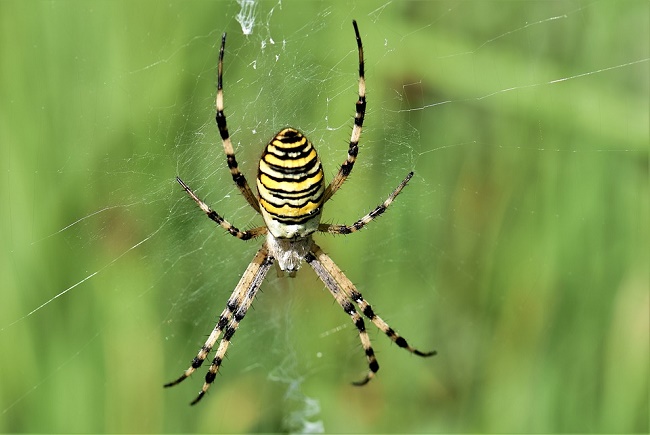
Other Related Questions:
Can you buy garden spiders?
Garden spiders are mostly native to North America that can extend southward into Central America and northward into the southern regions of Canada.
Just in case you find it troublesome to attract the garden spiders, there are few options available online where you can buy them.
When purchased, these spiders can be shipped directly to your address for usage in your vegetable garden, lawn, or landscape.
Are garden spiders poisonous?
No, garden spiders are neither poisonous nor venomous.
Although many people fear black and yellow garden spiders because of their large size and bright colors, these spiders are not dangerous for humans or pets.
They are also not very aggressive and aren’t known to bite humans unless touched or injured – usually, they prefer to flee rather than bite an intruder.
The pain you feel from a yellow garden spider bite is similar to a bee sting which is less painful than a wasp.
Do garden spiders come into the house?
The garden spiders prefer to remain outdoor, and they do not invade houses.
But if they invade homes, they may frighten residents, especially small children.
Their large orb webs can sometimes be troublesome to people near main entrances, windows, or walkways.
So, the next time you see spiders, help them relocate to areas far from human traffic and give them a wide enough berth to let them do their job.
The Conclusion
Overall, garden spiders are beneficial and should not be killed.
Given that almost all spiders are relatively harmless and provide great benefits to your property, leaving them alone as best is always the right choice.
For the times you need to work in your garden, you can minimize contact by wearing gloves and long sleeves to avoid small bites.
Share the post "5 Garden Spiders That are Beneficial for Your Plants"

Welcome to ProShieldPest.com. I am Tina Jones. I have been working as a pest removal professional in Winslow, Arizona lately. At present, I love to spend my time with my family as a retiree.
Here I share all my knowledge and experiences to help people understand better how they can stop pests at their homes without actually killing them. Hopefully, the information you will find here will help in safeguarding your home! You can check more about me here.


